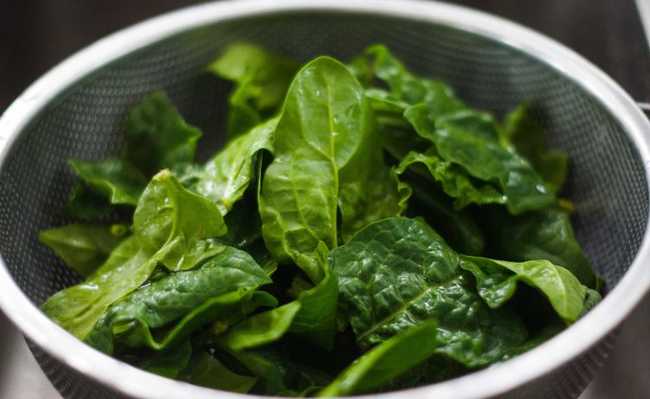How to Replace Corn Starch with Nine Tips
Potato starch, flour, and arrowroot flour are some options. Check out the full list

Edited and resized image by Vlad Kutepov is available on Unsplash
Starch, also called starch, is a carbohydrate found in plant foods such as corn, potatoes, rice and wheat. In Brazil, cornstarch is widely used in the kitchen to thicken broths, sauces, stews and to bind bread and cakes. But it can also be used in the preparation of glues, and industrially it is an ingredient in papermaking gums; of syrups and sweeteners; among other uses.
Also called cornstarch , term originating from the brand Mazeina , cornstarch is a powder extracted from corn kernels. When heated, it absorbs water very well, which gives this ingredient its thickening capacity. It is also an ally for people with celiac disease or non-celiac sensitivity to gluten, as it is usually gluten free (when it is not contaminated during processing).
- What is gluten? Bad guy or good guy?
However, cornstarch is not the only ingredient that can be used as a thickener. And besides, some people prefer to avoid it, as it is mostly derived from transgenic corn. Learn more about this topic in the article: "Transgenic corn: what it is and what are its risks". Check out some options to replace cornstarch:
1. Potato Starch
This starch version is made from crushing and drying potatoes. Like corn starch, potato starch does not contain gluten. However, it is a refined starch, meaning that it is high in carbohydrates and contains very little fat or protein.
Like other starches from tubers and roots, potato starch has a very mild taste, so it doesn't add undesirable flavor to recipes. You should replace corn starch with potato starch in a 1:1 ratio. This means that if your recipe calls for a tablespoon of cornstarch, replace it with a tablespoon of potato starch.
- Potatoes: benefits or harms?
- Potatoes beyond the table: discover alternative uses
2. Arrowroot Starch
Arrowroot is a vegetable native to South America whose underground stem is edible. According to popular wisdom, it has medicinal properties, but it is in cooking that the arrowroot stands out, being recommended for people with dietary restrictions on gluten. Considered as an easily digestible food, arrowroot starch (also called arrowroot starch) is used in the preparation of porridges, cakes and cookies. Due to this characteristic, it is indicated for the elderly, small children and people with physical weakness or patients in recovery. Arrowroot starch forms a clear gel when mixed with water, so it is great for thickening clear liquids (see study about it here: 1)
It is recommended to use twice as much arrowroot as cornstarch to get the same results.
3. Cassava starch (cassava starch or cassava starch)
The starch, sweet or sour, is the basis for preparing tapioca; being extracted from cassava, a root found throughout South America. However, some types of cassava contain cyanide, so cassava must first be treated to ensure its safety (see study on this: 2).
Most cooks recommend replacing one tablespoon of cornstarch with two tablespoons of cassava starch (polvilho).
To discover the benefits of cassava, take a look at the article: "Cassava: know its nutritional advantages".
4. Rice flour
Rice flour does not contain gluten, is good for the liver (according to a study) and is very easy to make at home. In addition to serving as an ingredient in pasta, cakes and breads, it can be used as a thickener, being an effective option to replace cornstarch. Learn about its benefits and how to use it in the article: "Rice flour: benefits and how to make it at home".
5. Linseed meal
Ground flaxseeds are very absorbent and form a gel when mixed with water, similar to egg whites. To replace cornstarch mix one tablespoon of crushed flaxseed with four tablespoons of water and wait ten minutes. This amount replaces the equivalent of two tablespoons of cornstarch.
7. Psyllium
Psyllium is the name given to the seeds of plants of the genus plantago, also called isphagula. Psyllium seed has the property of absorbing water in large amounts, which helps to form a great thickener and, better: to keep the intestines hydrated. These seeds also help to promote balance without increasing flatulence. You'll only need a small amount to thicken your recipes, so start with half a teaspoon and increase as needed.
To learn about the incredible benefits of psyllium, check out the article: "Psyllium: understand what it's for and use it to your advantage".
8. Guar gum
Gum is extracted from guar beans. The outer husks of the grains are removed and the central starchy endosperm is collected, dried and ground into powder. It is low in calories and rich in soluble fiber, which makes it an excellent option to replace cornstarch as a thickener (see studies about it: 3, 4)
But guar gum is a strong thickener. Start with a small amount - about a quarter of a teaspoon - and slowly increase to the desired consistency.
7. Xanthan Gum
In addition to guar gum, there is xanthan gum. The latter allows starch in foods to keep the air trapped, while guar gum keeps large particles in suspension. Generally, guar gum is good for preparing cold foods, such as fillings, while xanthan gum is the best choice for pastries, as it replaces gluten in flour and pasta, but both are vegan and gluten-free options.
Xanthan gum is a plant gum made by fermenting sugar with a bacteria called Xanthomonas campestris. This produces a gel, which is then dried and ground into a powder that you can use in your kitchen. Very small amounts of xanthan gum can thicken a liquid in large amounts (see study about it here: 5). It is recommended to add using a small amount of xanthan gum (1/4 teaspoon) and add it little by little, otherwise the liquid can become too thick.
- Xanthan gum and guar gum make food healthier
9. Other thickening techniques
Several other techniques can also help you thicken your recipes. These include:
- Cook over a low heat;
- Use vegetables: pureeing leftover vegetables can make the tomato sauce thicker and add more nutrients;
- Use coconut milk: coconut milk is excellent for making moquecas, sautéed with curry and other options that require flavor and creaminess. Learn about its benefits in the article: "Coconut milk: uses and benefits".










